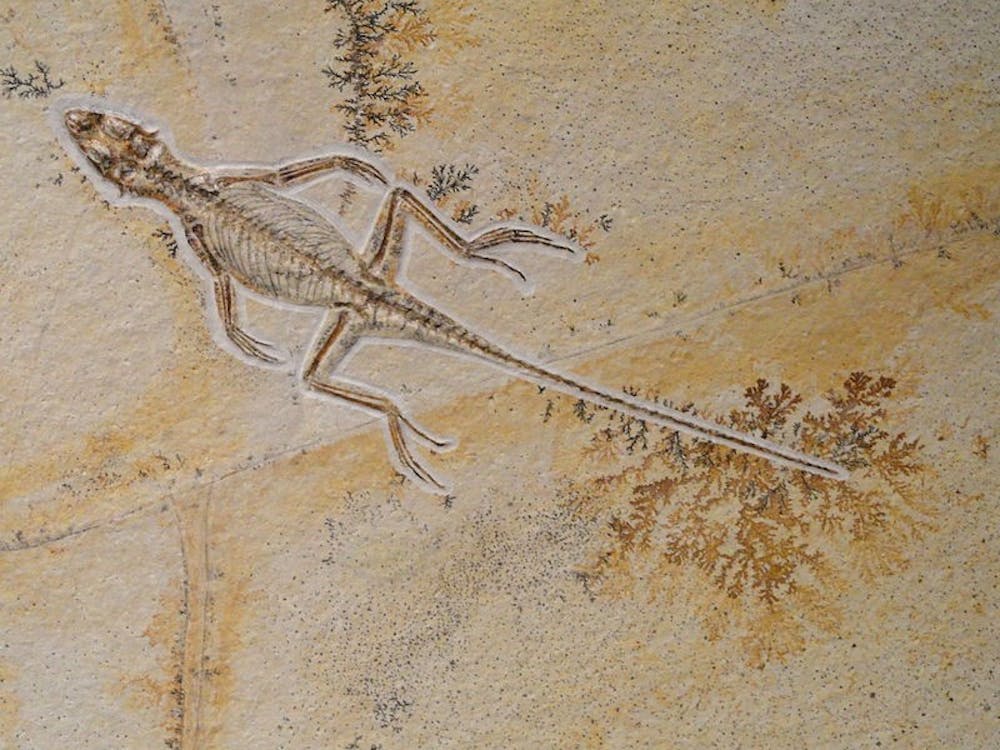Professor Jonathan Aitchison, head of the University of Queensland’s School of Earth and Environmental Sciences, recently proposed a theory that, if proven true, would revolutionize established archaeological models and deductions.
Aitchison suggested in a recent report that a 250 million-year-old Dinocephalosaurus fossil discovered in China provided strong support for live birth, contrary to the previous belief that the group only reproduces by laying eggs.
Although live birth has commonly been attributed as a trademark to exclusively mammals, it is also a regular occurrence among certain reptiles such as lizards and snakes. The definition of “live birth” does, however, vary quite a bit between the two types of vertebrates.
For mammals, the fetus develops in the uterus until it has absorbed enough nutrients to survive outside the mother’s womb. For reptiles, on the other hand, the offspring must first grow inside an egg within the mother’s body before they can hatch and emerge without the shell.
It wasn’t until the discovery of an ancient fossil in China that scientists and archaeologists alike realized the possibility of a third group of animals that experienced live birth. The fossil appeared to be a “terrible-headed lizard” that showed an embryo inside the mother. In reality, the fossil structure of the creature resembles that of an archosauromorph, which is a long-necked marine species that primarily dominated the South China Sea during the Middle Triassic Period.
Information on reproductive biology of archosauromorphs before the Jurassic Period was scarce up until this discovery. In fact, prior to the discovery of this lizard species, scientists believed for generations that land vertebrates such as birds and crocodiles are not capable of other forms of reproduction. Laying eggs is thought of as a primitive but only reproductive strategy for such species.
Professor Jun Liu, who is currently the lead researcher of this field working at the Hefei University of Technology in China, explained that he and other fellow researchers were excited upon first exposure to this fossil specimen.
“Further evolutionary analysis revealed the first case of live birth in such a wide group containing birds, crocodilians, dinosaurs and pterosaurs, among others, and pushes back evidence of reproductive biology in the group by 50 million years,” Liu said.
A factor that poses a significant challenge to the research team is that it is difficult to determine whether the embryonic species was food the mother had eaten or a fetus.
There was eventually a clue that eliminated the researchers’ doubts upon more careful examination and inspection. The embryo inside the mother was of the same species as the mother, and it would be highly unlikely for the creature to swallow its own kind. In addition, the embryo faced forward inside of the mother’s rib cage.
Traditionally, the predator would swallow its prey facing backwards in order to create a smoother transition for the movement of the prey down its throat. This shows that the embryo most likely belongs to an unborn baby rather than the victim of a meal.
Professor Mike Benton from the University of Bristol was able to provide further insight into the study by revealing that there is no reason to suggest why archosauromorphs would be physically or reproductively incapable of giving live birth.
The research project brought together teams from various research backgrounds and countries, including China, the U.S., the United Kingdom and Australia.
Researchers in the field are still trying to further their understanding of the reproductive evolution of land invertebrates through additional in-depth collaboration and investigation.





